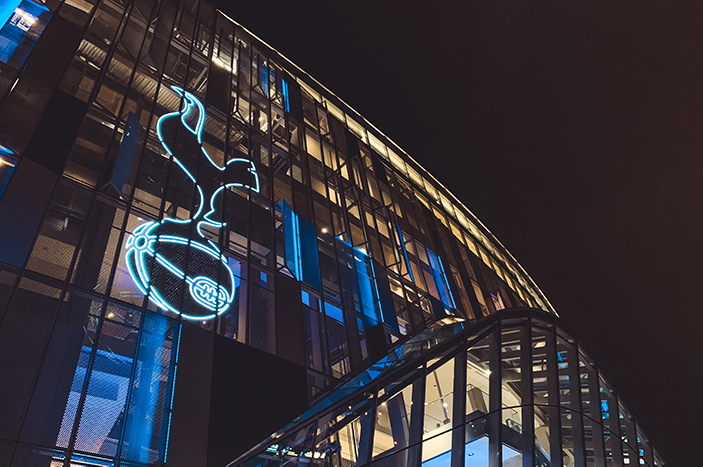Sports Going Green
 BCIA President Graeme Rees discusses how some of the UK’s best sporting venues are promoting the cause for sustainability.
BCIA President Graeme Rees discusses how some of the UK’s best sporting venues are promoting the cause for sustainability.
If you are a sports fan like me you might have spent many a World Cup or Olympic Games watching in awe at some of the international stadia playing host to these events – Milan’s San Siro, Barcelona’s Camp Nou and of course the Aztec Stadium in Mexico City certainly spring to mind. I always thought these places made some of the stadia on these shores look a bit archaic – compared to Southampton’s ‘The Dell’ to which I was regularly a visitor. Now, however, with the likes of Wembley and the London 2012 Olympic venues, we can be very proud of the sports facilities in this country.
On 7th July the BCIA hosted its second Young Engineers Network event at the world famous Tottenham Hotspur Stadium, which opened in 2019. The 20 young delegates in attendance enjoyed a tour of the stadium as well as a behind the scenes guide to the Plant and Control spaces before networking and refreshments at The Corner Pin pub nearby.
The stadium can lay claim to being one of the very best in the world and as well as being the home of Tottenham Hotspur Football Club it also hosted NFL games, boxing, rugby and music concerts, with Guns N’ Roses and Lady Gaga playing there this year.
Top Of The Table
Of course there is far more to a sports stadium than just looking spectacular. It needs to be safe, functional and particularly now more than ever, sustainable. In February this year Tottenham Hotspur announced that it had joined the UN Race to Zero, committing to halve its carbon emissions by 2030 and become net zero carbon by 2040. The Club also finished top of the Premier League sustainability table produced by the UN-backed Sport Positive and published by BBC Sport. One of the many sustainability measures deployed at the stadium includes 100% renewable energy and Zero Scope 2 emissions at Tottenham Hotspur Stadium, with LED lighting (including floodlights) and high efficiency building services systems in place to reduce energy use. It was therefore an ideal venue for our Young Engineers to visit as it provided a perfect example of the exciting projects you can become involved in as a building controls engineer.
It’s not just Premier League teams who are making sustainability a major part of their ethos. Forest Green Rovers Football Club has received recognition from the United Nations for its environmentally friendly policies, which include only serving vegan food, its organic playing surface and being run by green energy electricity. There are even plans in place for a new stadium made entirely of locally sourced wood.
Because of their global appeal and worldwide audience sporting events are in an ideal position to lead the way in setting an example when it comes to reducing their carbon footprint. Wimbledon has undergone many changes during its long and proud history, most notably the addition of electric roofs to Centre Court and Court No. 1. But the famous tennis club also recognises its environmental responsibilities and has also taken a number of measures to reduce its environmental impact, including ‘mothballing’ areas of the estate to save energy and installing high efficiency LED lights.
Trickle Down Effect
Just like we eventually see many modern innovations in the world of motoring originating in Formula 1 and finding their way into your everyday road car – things like direct shift gearboxes, paddle shifters and pushbutton starts – the ‘trickle down’ effect will see some of the technology going into high-profile building projects being utilised more and more further down the scale until it becomes standard.
Another big sporting event, the Tour de France, has not only inspired multiple generations to take up cycling as both a an enjoyable form of exercise and a healthier mode of transport, it was also one of the founding members of the charter of 15 eco-friendly commitments, under the aegis of the Ministry of Sports and WWF France (the World Wide Fund For Nature). The charter is a sporting adaptation of the United Nations’ 17 Sustainable Development Goals and each year binds the Tour de France into achieving social and environmental objectives.
Not every building controls project will be for a state-of-the-art sports arena but with environmentally sustainability gaining such widespread exposure through sporting venues and events then hopefully it will help provide some inspiration for young people looking for a career in which they can play their own part in creating a carbon neutral future.
Our Young Engineers’ recent outing will have provided a real eye opener for the potential opportunities that await them.












































